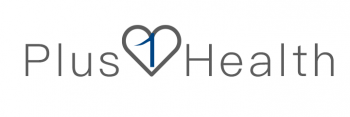To achieve targeted control and prevention of sleep problems, the best way is to conduct professional inspections in medical institutions and comprehensive inspections. However, under the constraints of time and cost, most of the time what everyone needs is a service that can provide daily data monitoring and sleep advice. The sleep monitoring service is thus born. From the current point of view, there are three main solutions for this type of service:
1. Mobile APP monitoring: sleep monitoring and guidance are carried out through the sensors that come with the mobile phone.
2. Wearable device monitoring: data monitoring through smart watches/bands and other devices.
3. Non-wearable device monitoring: Attach various sensors to pillows, sheets or bedsides for sleep monitoring.
1. Mobile APP
The mobile app uses the accelerometer, gyroscope, and microphone that come with the mobile phone to monitor sleep movements and analyze sleep quality. The mobile app requires the mobile phone to be as close as possible to the body and turn on the microphone, and then record the complete process from lying down to falling asleep to waking up according to the vibration of the bed and the surrounding sound.
Mobile app generally have functions: monitor sleep time, monitor deep sleep time, record sleep talking or snoring, record wake time, etc. But it is not difficult to find that the mobile phone app monitoring is in principle through the sensor of the mobile phone to sense the vibration of the bed and the surrounding sound. This is okay for single people, there is only one person on the bed. If the couple sleeps together and more than one person shares the same bed, this calculation is problematic. In addition, monitoring with a mobile phone app also has problems such as radiation and power consumption. Since there is no direct contact with the person being monitored, data such as pulse and blood oxygen saturation cannot be monitored. In addition, if you operate mobile phones, tablets and other devices before going to bed, the blue light emitted by the screen will affect the formation of melatonin in the human body and have a negative impact on sleep.
2. Wearable Devices
Wearable devices have their own acceleration sensors. Whether you wear a bracelet or a watch, you can more accurately perceive your movements and biological data through the built-in sensors.
When the built-in sensor of the wearable device records your exercise status and biological data, the data is transmitted to the mobile phone through bluetooth, and based on the personal information you provide, such as age, height, weight, etc., it is analyzed in the mobile phone app, and finally a series of statistical results are given. What data is included in the statistics depends on what hardware capabilities your wearable device has. If your wearable has a heart rate sensor, it can record changes in your heart rate while you sleep. If there are red LED and infrared LED, blood oxygen levels can also be detected. These are all auxiliary analysis effects for your sleep monitoring, which are much more accurate than mobile phone monitoring. Moreover, the wearable device is independent and will not be affected by the monitoring data of the person sleeping together.
This measurement method is much more accurate than a mobile phone, but if you want to thoroughly know how your brain waves are active when you sleep, or to accurately analyze what causes your insomnia, a wristband or watch is far from being able to do. On the other hand, professional medical equipment is often more expensive and inconvenient to carry. Wearable devices solve the problem of carrying, which can facilitate us to monitor sleep quality and make targeted improvements based on sleep conditions.
3. Non-wearable devices
Common non-wearable devices include smart mattresses, smart pillows, smart bed belts, and smart buckles. Such smart hardware products, which are solely designed for sleep monitoring, generally have built-in high-sensitivity sensors that can record the user’s sleep quality, heart rate, breathing and snoring.
Users can view the sleep report analyzed by the software on the mobile phone through a bluetooth connection. The biggest weakness of wearables is their inability to record and analyze breathing, which is the advantage of non-wearables. Non-wearable devices also monitor sleep quality for personal movement. Although they are placed on the bed, they are in close contact with people, making movement recording more accurate.
